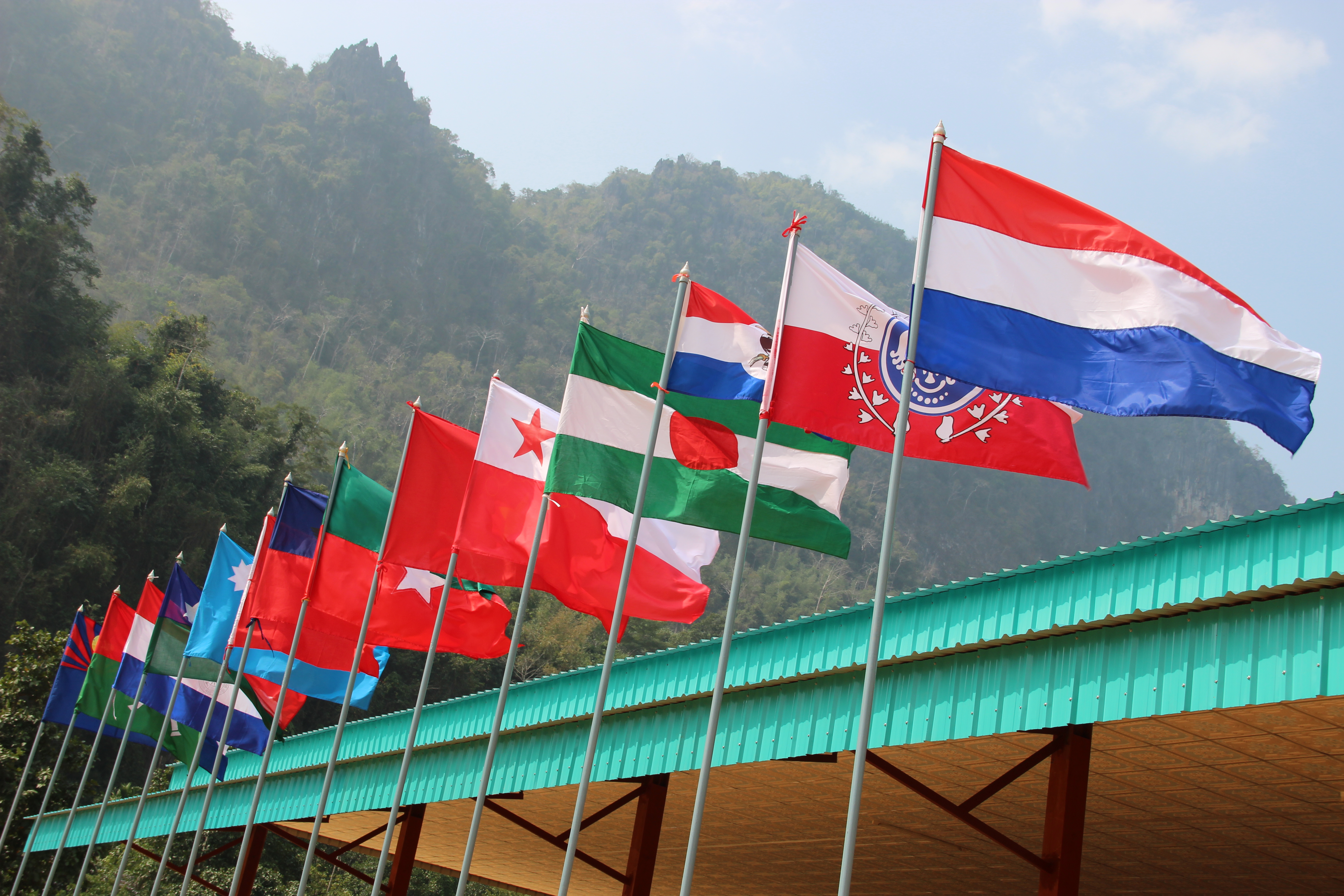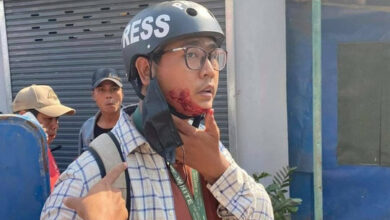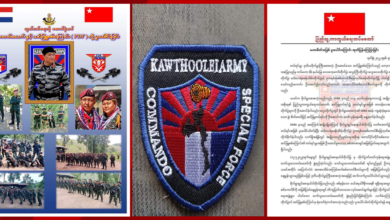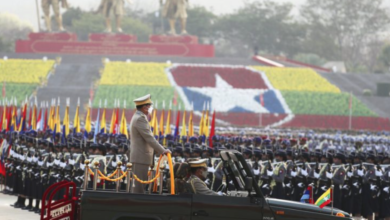Why Burma’s ethnic armed groups are reluctant to agree to Thein Sein government’s peace plan – a minority perspective

Since coming to power in 2011, President Thein Sein, a former general, has initiated a plan to resolve Burma’s decades-long ethnic conflict as part of broader domestic reform programs. Burma observers, both inside and outside, agree that resolving ethnic conflict is central to the success of political reform and lasting peace in the country. Among other things, President Thein Sein has promised political dialogue with the country’s ethnic groups and agreed to work towards establishing a federal system of government to accommodate the interests of the country’s ethnic nationalities.
Since then, his government has secured bilateral ceasefire agreements with the majority of the ethnic armed groups and has engaged in a series of intense negotiations with ethnic representatives for a final comprehensive nation-wide ceasefire accord.
However, it is almost five years since President Thein Sein came to power and after 18 months of exhaustive negotiations, the early optimism has evaporated and been replaced with pessimism and uncertainty after representatives of the 16 major ethnic armed groups rejected the draft nation-wide ceasefire agreement at their June summit in Karen State.
The government appeared to be caught off guard and was somewhat embarrassed by the rejection of the draft peace accord. It was temporary unable to make sense of this turn of events. But as usual, the government was quick to accuse the ethnic minority groups for the failed negotiations.
In response to the ethnic armed groups’ rejection of the draft peace proposal, the government’s chief peace negotiator, U Aung Min, wrote an article in Foreign Policy Magazine on June 26, urging Burma’s ethnic armed groups to “seize the moment for peace” and sign the ceasefire agreement to end the country’s decades-long civil war.
U Aung Min argued that the nationwide ceasefire accord is the best and most comprehensive document, because it is all-inclusive, and contains many government concessions. At the same time he credited President Thein Sein for “making peace a priority” during his term in office. Aung Min warned that those who rejected the nation-wide ceasefire agreement should bear the consequences for their actions.
The international community, with limited knowledge of Burma’s peace process and the country’s ethnic conflict, finds it hard to fathom why ethnic armed groups have refused to endorse the government’s nationwide ceasefire accord if they really want peace.
After all, if everything is black and white according to the message of peace preached by U Aung Min, ethnic armed groups would have nothing to lose by signing this long-awaited nation-wide ceasefire agreement.
The agreement would pave the way for smooth negotiation on fundamental issues such as federalism and greater political rights for ethnic minority groups.
However, for the leaders of the ethnic minority groups in Burma, behind its positive message of peace, presented by the government, there is more than meets the eye.
The government claims that the nationwide ceasefire accord is the most inclusive document, meaning all ethnic armed groups, regardless of their size and ceasefire status, are included and invited to sign the accord.
However, this claim is untrue and fabricated to please the international community. In contrast to the government’s claims, three ethnic armed groups, the Arakan Army, Ta’ang National Liberation Army and the Kokang ethnic armed group, all of which are members of the ethnic alliance army, were intentionally left out of the draft accord because the government has refused to recognize their legitimacy.
As a result, they cannot join the other ethnic armed groups in signing the comprehensive nationwide accord. This distortion of reality by the government has demonstrated that, in words, President Thein Sein’s government has proclaimed a message of peace and inclusiveness in the peace process but, in deeds, it is using tactics of deceit and divisiveness to drive a wedge between the ethnic armed groups.
The exclusion of the three ethnic armed groups from the nation-wide ceasefire accord is a major reason why the 16-member ethnic bloc rejected the government’s proposal at their summit in June. Representatives of the ethnic armed groups want the accord to be inclusive and non-divisive, meaning no individual group should be left out and that government should not play a divide and rule tactic to split up their collective bargaining position.
President Thein Sein may claim that he has made peace a priority, but if judged by his government’s actions he is certainly not a peacemaker. Whether in international gatherings or domestic meetings with leaders of ethnic minority groups, he rarely fails to mention peace as his government’s priority.
But the truth is that the nationwide ceasefire agreement has been negotiated and drafted against the backdrop of fierce and intense armed conflict Burma has ever seen in a generation. In the midst of peace talks and despite repeated appeals by representatives of ethnic minority groups, the government’s troops, its jets and helicopter gunships continue to launch unprovoked attacks on some of the ethnic armed groups in the country.
Indeed it is fair to say that Burma has seen more brutal armed conflict since President Thein Sein assumed power in 2011 than at any time in the last twenty years. But in spite of all the difficulties and unconducive environment for peace talks, as a result of continued military offensives in their territories, representatives of the country’s ethnic armed groups made the most of the opportunity and continue to negotiate with the government in good faith.
In one instance, while a delegation of the Kachin Independence Army was in Nay Pyi Taw, the country administrative capital, to discuss a bilateral peace agreement with the government, the army was launching fierce attacks against the KIA’s positions with no regards to how the attacks might jeopardize the peace talks. But the KIA demonstrated its sincerity and commitment to peace by continuing to hold talks with the government. Despite claiming to make peace his priority, President Thein Sein’s government has made no confidence-building concessions, such as the cessation of military offensives and reduction of the government’s troops in ethnic minority’s territories. And despite many verbal promises to reduce its military presence in ethnic minority’s territories, the government has instead reinforced and expanded them since the peace processes began four years ago. Besides continued armed hostilities between government forces and some ethnic armed groups, President Thein Sein’s government has done very little to promote religious harmony and peaceful coexistence between different racial and religious groups in the country. Under his watch, the country has seen and experienced some of the worst religious and racial violence in recent memory. Public sentiment against Muslim minority, particularly the Rohingya people, has been on an unprecedented rise in the last five years. In recent months tens of thousands of Rohingya Muslims have been forced to live in internally displaced camps in Western Burma while thousands of them have had to risk their lives on the open seas in order to escape persecution and inhumane condition in the camps. But instead of making efforts to discourage religious and racial tensions in the country, Thein Sein’s government continues to tacitly condone and support actions of Buddhist extremists and nationalist movements by giving them freedom to organize and mobilize against members of non-Buddhist communities, particularly members of the Muslim minority group.
People who spoke out against religious extremism have been prosecuted and thrown into prison. The passing of “Race and Religion Protection” and the “Population” bills early this year by the national parliament are only a few examples of Thein Sien government’s open support for nationalist and Buddhist extremist movements against other religious minorities in the country. The bills effectively prohibit intermarriage between people of different religious backgrounds and impose restrictions on the number of children women can have. The bills targeted the Muslim community, but they also affect other ethnic minority groups who tend to be predominantly Christians and other non-Buddhists, such as the Karen, Kachin, Chin, Karenni and Naga, and who are also likely to have more children and live in rural areas with a high infant mortality rate. If President Thein Sein is a genuine peace maker and would like to make peace his priority, he should have stopped or vetoed bills that would exacerbate the already troubled racial and religious relations in the country.
Finally, there is the question of the controversial military-drafted 2008 constitution, where amendments are needed if ethnic minority rights and political demands are to be met. In his usual uncompromising stance, General Min Aung Hlaing, the commander-in-chief of Burma’s armed forces, , squarely placed blame on ethnic armed groups for making illogical demands and failing to endorse the draft ceasefire agreement. He argued that ethnic minority rights are already fully protected under the 2008 constitution and reiterated that the ethnic armed groups would have to follow the position of the country’s military and disarm in pursuit of peace. In other words, unless the ethnic groups disarm (a position that the ethnic armed groups treat as a nonnegotiable) future negotiations on political dialogue would be next to impossible. If anything else, the constitution is certainly a sticking point and the greatest barrier to peace between the central government and the ethnic minority groups. The current constitution contains no provisions for regional autonomy and a federal system of government, which is a major demand of the ethnic armed groups. The constitution does in theory allow the election of state and regional parliaments but in effect very little power is delegated to the regional and state governments. Chief Ministers of the regions and states are directly selected by the central government and regional governments have very little power and control over the management of the regional and local affairs. Regional and state governments cannot manage their resources, collect tax, and raise revenues under their jurisdictions; the teaching of ethnic languages in government schools is prohibited; and most of the decision-making powers are retained by the central government in Nay Pyi Taw.
Regional governments and parliaments have little power, and 25 % of the regional parliamentary seats are controlled by the military as they are in national parliament. To meet the demands of the ethnic minority groups certain important clauses and provisions in the constitution will have to be changed. But recent actions by representatives of the military in the parliament to block changes to their veto power and the criterion on presidency eligibility have demonstrated that any change to the constitution to accommodate the demands of the ethnic minority groups is effectively impossible. Of great concern to the ethnic minority groups is one of the military’s six principles – a respect for and adherence to the current constitution. The government has yet to explain how they would circumvent the constitution and accommodate the interests and desires of the minority groups without changing the constitution. However, until the constitution is changed, the ethnic armed groups have every reason to be cautious and skeptical about signing the nationwide ceasefire agreement.
*Saw Greh Moo is a policy analyst at the Salween Institute for Public Policy and can be reached at grehmoo@hotmail.com




